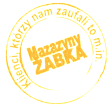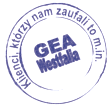Why are forklifts gaining in popularity?

Forklift trucks are a particularly wide product category. Very popular and used in every warehouse, work hall. They are so common that everyone hearing their name knows what equipment they are. They are used for material handling and are characterised by efficiency and high technology. In it you can find both simple hand trucks and those that perform complex operations. The latter group includes every reach truck.
What are reach trucks and what are their characteristics?
Their main features are:
- Load capacity from 1 to 3 tonnes;
- a large value for the maximum lift height - up to 12.5 metres;
- suitable for the safe and efficient storage of loads on high racks
- ease of transporting very long loads;
- the use of additional durable structural elements, such as roof guards, intended to protect and effectively safeguard the operator.
Usually when working in warehouses with high racks, so-called reach truck models are used. These differ from typical reach trucks. Here, support arms with small castors are a basic feature of their construction. They stabilise the load and distribute its weight evenly, even when lifting to very high heights. During operation, the operator sits sideways to the load to be lifted, which gives him better control over the pallet being moved.
Another type of trolley used in high bay racking is the so-called specialised trolley (e.g. system trolley for vertical picking). These are devices in which the operator rises with the load, picking goods at great heights.
Something more about sidecars
Sideloaders or Reach Trucks - are characterised by the fact, as mentioned above, that the operator's seat is positioned perpendicular to the direction of travel of the vehicle. Reach trucks are characterised by their compact design and small dimensions. Which enables these lifting devices to move smoothly even in narrow warehouse aisles. The use of reach trucks represents a significant improvement in the daily work of the entire warehouse. Above all in the process of warehouse handling and storage of goods. These activities are made more efficient and effective by the use of reach trucks.
What is their use?

High-bay trucks typically serve medium and high-bay warehouses - in both the food and industrial sectors.
They are also suitable for transporting long, unwieldy loads - such as boards, pipes, furniture components, etc.
What are lift trucks?
Lift trucks, also known as mast trucks, are particularly suitable for storing and retrieving goods. Manual forklifts are very popular and are mainly used for the storage of goods in large shops. In addition, there are electric forklifts with a special drawbar, which enables the efficient transport of goods.
Front lift trucks
Front-lift trucks are characterised by the fact that the weight of the load to be lifted is equal to the weight of the forklift truck. An additional type of front lift truck can be distinguished - the reach truck. The load is lifted by forks or other attachments. They most often support other equipment working in the warehouse, serving for example to collect orders.
Internal mast lift trucks

Another type of lift truck is the internal mast lift truck which covers the load. This truck has a fixed mast. In the internal mast lift truck, the fork tines are located outside the truck arms. In this category of lift trucks there are also platform lift trucks with internal mast.
The mast lift truck is well suited to warehouses where trips are limited to a certain height, but where it is necessary to lift the load to a greater height at certain points in the warehouse.
Specialised trucks
A specific type of forklift truck is the special-purpose forklift truck. It is characterised by the fact that the operator is lifted by the forklift along with its load. They are used in specialised logistics and warehouse operations. They work well in high-bay warehouses. It allows for very precise placement of the load in the planned places. The operator can precisely observe the process of placing the load on the high rack.
Gantry lift trucks
Why gantry trolleys? Because the frame of such trolleys is in the form of a gate, and the load is completely enclosed by such a frame. It is lifted inside it.
What are telehandlers?
Telescopic loader is a machine used extensively in construction, industry and agriculture. It is used for assembling work equipment, unloading materials using pallet forks, transporting materials using shovels, as well as an outrigger equipped with a working platform for people. The machine is ideal for hauling such materials as earth, concrete elements, loose materials, etc. It is extremely useful for loading and unloading pallets. Thanks to the working platforms, it can be easily transformed into a lift to facilitate work at height.

- grabs,
- spoons,
- mowers,
- working platforms,
- ploughs,
- pitchforks.
UDT AUTHORISATION CATEGORIES:
Speaking of forklift trucks and their types, it is worth mentioning the categories of UDT authorisations. The Office of Technical Inspection defines three categories of authorisations to operate lift trucks:
- WJO category III - entitles to operate the lift trucks both manual and remotely controlled
- WJO category II - entitles to operate forklift trucks, excluding specialized ones
- WJO category I - entitles to operate forklifts, including specialised ones.
III WJO is the lowest category of UDT authorisations, while I WJO is the highest. It is also worth knowing that with a category II WJO you can operate forklifts of category III WJO and analogically: with a category I WJO licence you can operate forklifts of categories II WJO and III WJO.






























